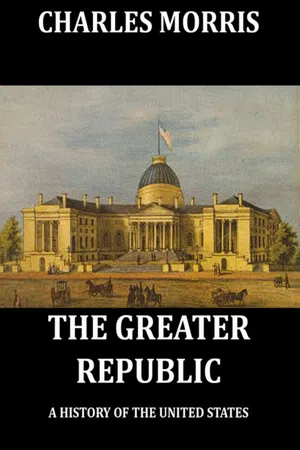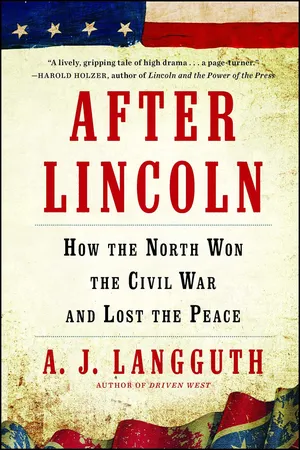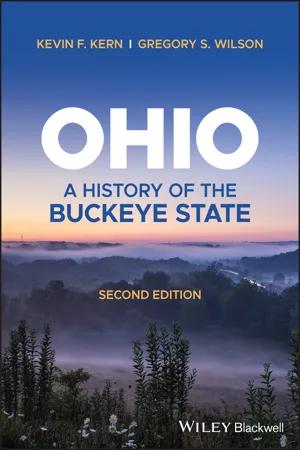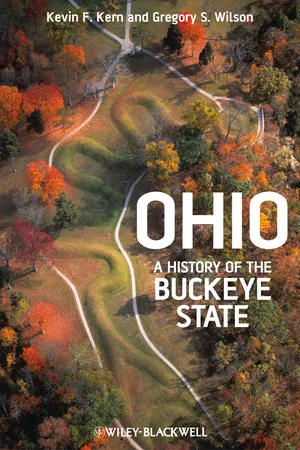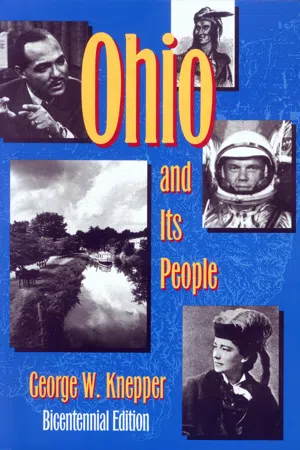History
President Rutherford B Hayes
Rutherford B. Hayes was the 19th President of the United States, serving from 1877 to 1881. He is known for overseeing the end of Reconstruction and for his efforts to reform the civil service. Hayes also advocated for civil rights and attempted to reconcile the North and South after the Civil War.
Written by Perlego with AI-assistance
Related key terms
11 Key excerpts on "President Rutherford B Hayes"
- eBook - ePub
African Americans and the Presidents
Politics and Policies from Washington to Trump
- F. Erik Brooks, Glenn L. Starks(Authors)
- 2019(Publication Date)
- Greenwood(Publisher)
Rutherford Birchard Hayes was born on October 4, 1822, in Delaware, Ohio. He earned a law degree from Harvard University before returning to Ohio to practice law. He opposed slavery and was active in the Republican Party. Hayes served as a Union soldier during the American Civil War and became a major in the 23rd Ohio Regiment. He had political support from blacks when he ran for the presidency, as did other Republican candidates at the time, due to the party’s support for equality for blacks. For example, Frederick Douglass became the first black man to address a major political party convention when he spoke for racial equality at the 1876 Republican convention that nominated Hayes. Hayes lost the popular vote due to suppression of Republican votes in the South, particularly against black voters in Louisiana, South Carolina, and Florida. However, after he led in a very contentious Electoral College vote of 185 to 184, Hayes was declared the winner against his Democratic contender, Governor Samuel J. Tilden of New York.President Hayes was the last president of the Reconstruction era. By the time he was elected president, Reconstruction in the South was all but over. Only Louisiana and South Carolina still implemented reconstructive policies, as by 1876 they were the only two states in the South that still had governors who were affiliated with the Republican Party. The focus of Hayes’s administrative theory of government was meritrocratic, or the equal treatment of individuals without regard to political affiliation. For example, his cabinet selections included one member who was an ex-Confederate and Democrat and another who was a Liberal Republican in 1872 and opposed the election of Ulysses Grant as president.Hayes did seek funding for education and voting rights for blacks and whites. Yet, he was clear that education for blacks should support training in manual labor. During his inaugural address, his views to repair the effects of the Civil War were apparent in such statements as the following:Let me assure my countrymen of the Southern States that it is my earnest desire to regard and promote their truest interest, the interests of the white and of the colored people both and equally and to put forth my best efforts in behalf of a civil policy which will forever wipe out in our political affairs the color line and the distinction between North and South, to the end that we may have not merely a united North or a united South, but a united country. (Hayes 1877)Rutherford B. Hayes, the 19th president of the United States, became president as a result of a compromise between two political parties. The Republican Party ended Reconstruction and removed federal troops from southern states in exchange for victory in the disputed presidential election of 1876. (Library of Congress) - eBook - ePub
Maligned Presidents: The Late 19th Century
The Late 19th Century
- M. Skidmore(Author)
- 2014(Publication Date)
- Palgrave Pivot(Publisher)
3 Rutherford B. HayesAbstract:Despite his troubled election that brought jeers of “Your Fraudulency,” or “President RutherFRAUD B. Hayes,” undoubtedly Hayes was a man of integrity and ability. He worked vigorously to protect his office, battling Congress on appointments, and won. He sought to conciliate the South, and received assurance from its leaders that they would ensure black rights. In response, he withdrew the few remaining troops of occupation. Southern leaders refused to honor their commitments, and Hayes’s southern policy was a failure. He was naïve, but there was so little support remaining nationally for ensuring civil rights that perhaps no president could been successful at the time. Regardless, he was a strong and vigorous leader, and does not fit the stereotype of the weak Gilded Age president.Skidmore, Max J. Maligned Presidents: The Late 19th Century. New York: Palgrave MacMillan, 2014. DOI : 10.1057/9781137438003.0004.Grant’s successor, Rutherford B. Hayes (1877–1881), today is far less controversial than Grant, partly because Grant is the more interesting figure, and also because those who write about him are likely to have more vested interest one way or the other in their subject than those who write about Hayes. Hayes, however, also presents strengths, and was not a colorless character—nor was there anything colorless about his election: he came to office in what was the most controversial election in the history of the United States, the election of 1876 with its alleged “Compromise of 1877.”Initially, “the new First Family remained unknown.” Reporters and others knew something of Hayes and his past, praised his “apparent firmness and personal courage,” and knew that he had “a good war record and was sensible in his few public statements.” Although he “interested the public,” however, he—unlike Grant—“was hardly a man to draw a crowd.”1 There were rumors that First Lady Lucy Hayes would ban alcohol from the executive mansion. After considering the matter, Hayes took her advice and adopted the ban, causing Mrs. Hayes to go down in history as “Lemonade Lucy.”2 - Edward O. Frantz, Edward O. Frantz(Authors)
- 2014(Publication Date)
- Wiley-Blackwell(Publisher)
Rutherford B. Hayes: Warrior and President (1995).Presidential Candidate
Hayes decided not to run for a third term, and in January 1872 he left the governorship and, he believed, retired from politics. Not having practiced law since shortly after the start of the Civil War, he began to manage the real estate investments of his uncle, Sardis Birchard, which he knew he would soon inherit. But hard times following the financial Panic of 1873, coupled with political scandals during Grant’s second term, resulted in a Democratic victory at the polls in the 1874 midterm elections. With the Ohio Republican Party in disarray, it turned to its best vote getter, and in June 1875 it nominated Hayes for a third gubernatorial term. Hayes united disparate Republicans – radicals and moderates, reformers and spoilsmen – and won. But his commitment to civil service reform was not an issue in the campaign and had little to do with his victory. Since it was a rare Republican victory in an important state, he immediately became a potential 1876 presidential nominee.The election of 1876 and its ultimate resolution in 1877 has attracted many authors, but the best even-handed treatment is in Keith Ian Polakoff, The Politics of Inertia: The Election of 1876 and the End of Reconstruction (1973). Hayes proved to be the “available” man and did indeed win the nomination. He was a war hero, and his record in Congress and in Ohio satisfied both radical and reform Republicans. His formidable Democratic opponent was Samuel Jones Tilden, who had helped smash the corrupt William M. Tweed ring in New York City and then smashed New York State’s corrupt canal ring. Tilden’s career as a successful railroad lawyer, a consummate political organizer and tactician, and a reform governor is covered by Alexander Clarence Flick, Samuel Jones Tilden: A Study in Political Sagacity (1939). Both candidates followed tradition and did not campaign, but as was the custom they took policy positions in letters accepting their nominations. To arrest the drift of reformers to Tilden, Hayes responded to urgent pleas from the civil service reformers George William Curtis and Carl Schurz and called for a “thorough, radical, and complete” reform of the spoils system. For the literary career and political influence of Curtis, see Gordon Milne, George William Curtis & the Genteel Tradition (1956), and for a portrait of Schurz as a reformer and a practitioner of ethnic politics, see Hans L. Trefousse, Carl Schurz: A Biography (1982). Hayes also promised not to seek a second term lest patronage be used to secure his renomination, but some reformers like E.L. Godkin of the Nation thought the one-term pledge a bad idea since four years would not be enough time to reform the civil service. Godkin’s editorial support of reform is discussed by William M. Armstrong in E.L. Godkin: A Biography (1978). For an analysis of the liberal reformers, virtually all of whom backed civil service reform, see John G. Sproat, “The Best Men:” Liberal Reformers in the Gilded Age- eBook - ePub
- Charles Morris(Author)
- 2012(Publication Date)
- Jazzybee Verlag(Publisher)
CHAPTER XX. ADMINISTRATIONS OF HAYES, GARFIELD, AND ARTHUR, 1877-1885.THE NINETEENTH PRESIDENT. RUTHERFORD BIRCHARD HAYES (1823-1893) One term, 1877-1881.R.B. Hayes—The Telephone—Railway Strikes—Elevated Railroads—War with the Nez Perce Indians—Remonetization of Silver—Resumption of Specie Payments—A Strange Fishery Award—The Yellow Fever Scourge—Presidential Election of 1878—James A. Garfield—Civil Service Reform—Assassination of President Garfield—Chester A. Arthur—The Star Route Frauds—The Brooklyn Bridge—The Chinese Question—The Mormons—Alaska Exploration—The Yorktown Centennial—Attempts to Reach the North Pole by Americans—History of the Greely Expedition.Rutherford Birchard Hayes was born in Delaware County, Ohio, October 4, 1822, and was graduated from Kenyon College at the age of twenty years. In 1845 he completed his legal studies at Harvard University, and practiced law, first at Marietta, in his native State, then at Fremont, and finally in Cincinnati. He entered the military service, at the beginning of the war, as major, and rose to the rank of brevet major-general. His career as a soldier was creditable. While still in the service, in 1864, he was elected to Congress, and was governor of Ohio in 1867, 1869, and again in 1875. His popularity as chief magistrate of one of the leading States led to his nomination to the presidency, to which, however, it must be conceded, he had not a clear title. He died at Fremont, Ohio, January 17, 1893.President Hayes proved his desire to strengthen the fraternal feeling between the North and South by appointing as a member of his cabinet David McKey, his postmaster-general. Mr. McKey was from Tennessee, and had served the Confederacy during the Civil War. Hayes' administration on the whole was uneventful, though marked by a number of incidents which deserve mention. It was in 1877 that the first telephone for business purposes was put into use. It connected the residence of Charles Williams, in Somerville, Massachusetts, with his business office in Boston, three miles distant. Alexander Bell, of the latter city, was the inventor of the instrument, which is now in general use throughout the country, and serves to connect points more than a thousand miles apart. - eBook - ePub
The American President
A Complete History
- Kathryn Moore, Kathryn Moore(Authors)
- 2018(Publication Date)
- Union Square & Co.(Publisher)
R UTHERFORD B. H AYES ★ ★ ★ NINETEENTH PRESIDENT ★ ★ ★LIFE SPAN • Born: October 4, 1822, in Delaware, Ohio • Died: January 17, 1893, in Fremont, Ohio NICKNAME • Dark-Horse President RELIGION • No formal affiliation, but attended Methodist services after his marriage HIGHER EDUCATION • Kenyon College, 1842 • Harvard Law School, 1845 PROFESSION • Lawyer MILITARY SERVICE • Civil War: served with Twenty-Third Ohio Volunteer Infantry Regiment June 1861 to June 1865; began as a major and rose to rank of major general FAMILY• Father: Rutherford Hayes (1782–1822)• Mother: Sophia Birchard Hayes (1792–1866)• Wife: Lucy Ware Webb Hayes (1831–1889); wed on December 30, 1852,in Cincinnati, Ohio• Children: Birchard “Birch” Austin (1853–1926); James Webb Cook (1856–1934); Rutherford “Ruddy” Platt (1858–1927); Joseph Thompson (1861–1863); George Crook (1864–1866); Frances “Fanny” (1867–1950); Scott Russell (1871–1923); Manning Force (1873–1874)POLITICAL LIFE • Cincinnati city solicitor (1858–1861) • US representative (1865–1867) • Ohio governor (1868–1872; 1876–1877) PRESIDENCY • One term: March 4, 1877–March 4, 1881 (inauguration held on March 5 since the 4th was a Sunday) • Republican • Reason for leaving office: announced at start of presidency he would not seek second term• Vice president: William A. Wheeler (1877–1881)ELECTION OF 1876• Electoral vote (disputed and went to committee which determined results): Hayes 185; Samuel Tilden 184• Popular vote: Hayes 4,036,572; Tilden 4,284,020The year was 1876 and the presidential election was mired in controversy. Both parties contested the results, each accusing the other of fraud. The final result was not yielded through the democratic process, but, rather, by deals made behind the scenes. The winner, and new president, was Republican candidate Rutherford B. Hayes.CABINET ★ ★ ★ ★ ★ ★ ★ ★ ★ ★SECRETARY OF STATE William M. Evarts (1877–1881) - eBook - ePub
The Executive Branch of the Federal Government
Purpose, Process, and People
- Britannica Educational Publishing, Brian Duignan(Authors)
- 2009(Publication Date)
- Britannica Educational Publishing(Publisher)
In 1879 Grant found that a faction of the Republican Party was eager to nominate him for a third term. Although he did nothing to encourage support, he received more than 300 votes in each of the 36 ballots of the 1880 convention, which finally nominated James A. Garfield. In 1881 Grant bought a house in New York City and began to take an interest in the investment firm of Grant and Ward, in which his son Ulysses, Jr., was a partner. Grant put his capital at the disposal of the firm and encouraged others to follow. In 1884 the firm collapsed, swindled by Ferdinand Ward. This impoverished the entire Grant family and tarnished Grant’s reputation.In 1884 Grant began to write reminiscences of his campaigns for the Century Magazine and found this work so congenial that he began his memoirs. Despite excruciating throat pain, later diagnosed as cancer, he signed a contract with his friend Mark Twain to publish the memoirs and resolved grimly to complete them before he died. In June 1885 the Grant family moved to a cottage in Mount McGregor, N.Y., in the Adirondack Mountains, and a month later Grant died there.RUTHERFORD B. HAYES
(b. Oct. 4, 1822, Delaware, Ohio—d. Jan. 17, 1893, Fremont, Ohio)R utherford Birchard Hayes, the 19th president of the United States (1877–81), brought post–Civil War Reconstruction to an end in the South, trying to establish new standards of official integrity after eight years of corruption in Washington, D.C. He was the only president to hold office by decision of an extraordinary commission of congressmen and Supreme Court justices appointed to rule on contested electoral ballots.Hayes was the son of Rutherford Hayes, a farmer, and Sophia Birchard. After graduating from Kenyon College at the head of his class in 1842, Hayes studied law at Harvard, where he took a bachelor of laws degree in 1845. Returning to Ohio, he established a successful legal practice in Cincinnati, where he represented defendants in several fugitive-slave cases and became associated with the newly formed Republican Party. In 1852 he married Lucy Ware Webb, a cultured and unusually well-educated woman for her time. After combat service with the Union army, Hayes was elected to Congress (1865–67) and then to the Ohio governorship (1868–76).In 1875, during his third gubernatorial campaign, Hayes attracted national attention by his uncompromising advocacy of a sound currency backed by gold. The following year he became his state’s favourite son at the national Republican nominating convention, where a shrewdly managed campaign won him the presidential nomination. Hayes’s unblemished public record and high moral tone offered a striking contrast to widely publicized accusations of corruption in the administration of Pres. Ulysses S. Grant (1869–77). An economic depression, however, and Northern disenchantment with Reconstruction policies in the South combined to give Hayes’s Democratic opponent, Samuel J. Tilden, a popular majority, and early returns indicated a Democratic victory in the electoral college as well. Hayes’s campaign managers challenged the validity of the returns from South Carolina, Florida, and Louisiana, and as a result two sets of ballots were submitted from the three states. Eventually a bipartisan majority of Congress created a special Electoral Commission to decide which votes should be counted. While the commission was deliberating, Republican allies of Hayes engaged in secret negotiations with moderate Southern Democrats aimed at securing acquiescence to Hayes’s election. On March 2, 1877, the commission voted along strict party lines to award all the contested electoral votes to Hayes, who was thus elected with 185 electoral votes to Tilden’s 184. - eBook - ePub
After Lincoln
How the North Won the Civil War and Lost the Peace
- A. J. Langguth(Author)
- 2014(Publication Date)
- Simon & Schuster(Publisher)
Rutherford B. HayesPassage contains an image
CHAPTER 19
RUTHERFORD BIRCHARD HAYES (1876)
F ROM HIS TENTATIVE ENTRANCE TO the world, Rutherford B. Hayes was considered diffident. His father had uprooted the family from New England to seek his fortune in a rustic town on a branch of the Ohio River, and within a few years, he had become partner in a distillery and a stalwart of the Presbyterian Church. But when the noxious fevers of an 1822 epidemic struck Ohio, Hayes was carried off three months before his namesake was born.The infant looked destined to follow. Neighbors asked regularly whether Mrs. Hayes’s baby had survived the night.But Sophia Birchard Hayes had recently also lost a daughter, and she dedicated herself to sustaining this son, with his large head and enormous, watchful eyes. Her mission became more urgent when her older son went larking on a river with friends, crashed through its ice, and froze to death.In time, Rutherford was robust enough to go off to Kenyon College, although any form of sport was beyond him. On graduation, he returned home to study with a local lawyer. But the townspeople who found the young man unassuming missed his strong instinct for self-improvement.He traveled to Massachusetts to enroll in Harvard Law School and applied himself to his courses. In later years, though, classmates remembered little about him but his good nature.During that period, his mother’s brother had become the wealthiest businessman in the state, and Hayes seemed likely to set up a desultory law practice and spend his days reading for pleasure while he awaited his inheritance.Instead, he married Lucy Ware Webb, a doctor’s daughter who channeled his talents into becoming an advocate for local workingmen. While Rud Hayes still indulged his bookish interests at the Cincinnati Literary Club, he also took on and won celebrated cases that furthered his reputation. In politics, he was a Whig—opposed to slavery but no abolitionist. Yet his practice expanded to include the defense of runaway slaves, and he once found himself on a legal team with Salmon Chase. - eBook - ePub
Ohio
A History of the Buckeye State
- Kevin F. Kern, Gregory S. Wilson(Authors)
- 2023(Publication Date)
- Wiley-Blackwell(Publisher)
Beginning with their lives prior to becoming president, Hayes, Garfield, Harrison, and McKinley all had varied backgrounds, but within them were key similarities that prepared each for the presidency. Ohio’s late nineteenth-century presidents emerged from the political world at the state level. Drawing on this experience, as well as their records of service in the military and politics, they took advantage of Ohio’s centrality to national developments and its political power to reach the nation’s highest office. Voters and the Republican Party saw them as moderates, able to bring together various factions, and as offering modest domestic reforms while supporting the rise of big business. Clouds of corruption surrounded Grant and continued with Hayes’s victory in the disputed election of 1876. Tragedy surrounds the group as well, as both Garfield and McKinley were assassinated. Until McKinley, each president won in an era of razor thin margins that decided elections. As discussed below, McKinley broke with these trends in two important ways. He won in 1896 in what many call a “realigning election” and by even wider margins in 1900. In 1898 he led the United States to war against Spain, the first against a European power since 1812. The results of the war helped launch the United States as a global power.Hayes was born in Delaware, Ohio in 1822. His father ran a successful distillery and farm but died ten weeks before little “Rud” was born. His mother, Sophia, ran the farm with the help of her younger brother, Sardis, who served as a surrogate father to Rud and his older sister, Fanny. After these tragic early years, Rutherford and Fanny experienced a comfortable childhood. Both were active and eager to learn, but as they grew older, Fanny pushed Rutherford to achieve the prominent career denied to her because of her sex. Rutherford studied hard and with Sardis’s financial help managed to attend Kenyon College in Gambier, where he graduated valedictorian in 1842. The honor surprised him, because it was one usually reserved for a church member, which he was not, nor would he ever be. Rutherford then graduated Harvard Law School in 1845 and after beginning work in Lower Sandusky (later renamed Fremont) he moved in 1849 to Cincinnati, where he settled into a successful career a criminal defense lawyer.In these years, Cincinnati billed itself as the “Queen City of the West,” and Rutherford took advantage of the social life and opportunities for success the city offered to someone of his charm, intelligence, and standing. Amid his courting of female socialites, Hayes fell in love with a young woman from his hometown, Lucy Webb, who had been attending the Wesleyan Female College in Cincinnati. They were married in December 1852. Lucy would eventually give birth to eight children (all but one of them boys), three of whom died in infancy. - No longer available |Learn more
Ohio
A History of the Buckeye State
- Kevin F. Kern, Gregory S. Wilson(Authors)
- 2013(Publication Date)
- Wiley-Blackwell(Publisher)
Hayes, Garfield and Harrison grew up with farming as the mainstay of the family livelihood. McKinley though reflected the growing industrial makeup of Ohio. He was born in Niles, Ohio on January 29, 1843, the seventh of eight children born to William McKinley, Sr., and Nancy Allison McKinley. The family moved to nearby Poland, Ohio, when William was ten. His father worked in iron foundries and then ran a small business while his mother ran the household. McKinley was educated at local schools and then attended Allegheny College in Meadville Pennsylvania for one term in 1860.Although emerging from varied backgrounds, as it was for Grant, the Civil War would become the defining experience for Hayes, Garfield, Harrison, and McKinley. When the Confederate assault on Fort Sumter in April 1861 signaled the beginning of the Civil War, Rutherford Hayes was nearly forty years old, with three children at home and his wife, Lucy, expecting their fourth. He did not volunteer for military service immediately, but after a month his desire to serve won out. “I would prefer to go into it if I knew I was to die or be killed in the course of it, than to live through and after it without taking any part in it.” Like the other Ohio presidents who served in the Civil War, Hayes’s personal life and his political career were shaped by the experience.Hayes was among the first three-year volunteers, and like other men of his social standing, he used his political connections to gain an appointment as an officer, in his case as a major with the 23rd Ohio Volunteer Infantry (OVI). Though he lacked military experience, Hayes learned quickly, fought bravely, and soon earned the respect of the enlisted soldiers as well as his officers, one of whom was fellow Ohioan and future president, William McKinley. Wounded five times, Hayes ended the war as a brevetted major general. Throughout the conflict, Hayes strengthened his love of Ohio and his bias towards western soldiers and people generally. He lauded his own 23rd OVI as the “crack regiment,” idolized fellow Ohioan General William Tecumseh Sherman, and regularly criticized easterners and the Army of the Potomac as being weak willed. Meanwhile, Lucy served as a nurse, aiding Rutherford and other soldiers in Middletown, Maryland, in 1862 following the battle of Antietam. - eBook - ePub
Ohio and Its People
Bicentennial Edition
- George Knepper(Author)
- 2003(Publication Date)
- The Kent State University Press(Publisher)
Rutherford Birchard Hayes (1822–93) was well qualified for presidential office. Born in Delaware, Ohio, Hayes was raised by his widowed mother and his maternal uncle, Sardis Birchard, a highly successful businessman. After leading his class at Kenyon College, he graduated from Harvard Law School, was admitted to the Ohio bar, set up practice in Cincinnati, and was elected City Solicitor. During the Civil War he rose from major to major general of Ohio volunteers. He fought in many battles and sustained several battle wounds. After Appomattox his impeccable war record contributed to his election as a member of Congress, where he supported radical reconstruction. Hayes was elected governor of Ohio three times between 1868 and 1876. While serving his third term he was chosen to be the Republican presidential nominee. His personal rectitude, outstanding war record, and concern for good government offset his somewhat bland personality. The Republicans found him a likely candidate in 1876 because he had been reelected governor of a major state in an election otherwise dominated by the Democrats.The presidential election of 1876 was one of the most dramatic in American history. It has been called the “stolen election,” or, more kindly, the “disputed election.” When the ballots were counted, the Democrat, Samuel Tilden of New York, had received a quarter-million more popular votes than Hayes and appeared to have the necessary electoral votes as well. But Republican strategists challenged the electoral counts from Florida, South Carolina, and Louisiana, states that had remnants of “carpetbag” government controlled by Republicans and their black supporters. Each of these states submitted a Republican slate of electors in competition with the Democratic slates. In addition to these contests, the party challenged one electoral vote from Oregon. In all, twenty-one electoral votes were disputed.To sort out the mess, Congress established an electoral commission of fifteen members composed of senators, representatives, and Supreme Court justices. Seven were Republicans, seven were Democrats, and the swing vote was to belong to David Davis, a Supreme Court justice whom both sides trusted. But the Illinois legislature had placed Davis in a different public service role by this time, electing him as their U.S. senator, and so another justice, a Republican, was chosen for the electoral commission. In each disputed case, by an 8 to 7 party vote, the commission certified the Republican elector. This gave Hayes 185 electoral votes to Tilden’s 184. Outraged Democrats were partially mollified by assurances that the Republicans would address their agenda of wants, including Democratic control of the internal affairs of southern states, the removal of remaining federal troops in the South, and the appointment of a southerner to a cabinet position. - J. Q. (James Quay) Howard(Author)
- 2007(Publication Date)
- Perlego(Publisher)
The non-partisan verdict upon this letter is that it is faultless in style, sound in principle, courageous, broad and elevated in tone, liberal, wise, statesmanlike, and strong. It is, in short, the declaration of faith of an honest man who has a heart in his breast and a head on his shoulders, with purity in that heart and brains in that head.The conclusions which follow our study of the public career of Rutherford Birchard Hayes, and the study of that interior life, the beauty of which the world will not know until he has passed from it, are briefly these.In boyhood, in battle, in the civic chair, in the esteem of his State, in every duty and relation of life, he has been first, and now, it would seem, is first in the hearts of his countrymen. As a student, he was foremost; as a lawyer, he was in the front rank; as a soldier, he was the bravest; as a legislator, the most judicious; as a governor, second to none of Ohio's great magistrates.The most striking characteristic of Hayes as a soldier was his personal intrepidity. Anthony Wayne, Francis Marion, and Ethan Allen were called brave men in the Revolution, and so they were; but we look in vain in their histories for as numerous proofs of unsurpassable daring as the hero of Cloyd Mountain, Cedar Creek, and South Mountain, has given us. Four horses shot under him; four wounds in action; fighting after he fell; a hundred days exposed to death under fire—these are the evidences of as lofty a courage as is yet known among men.As a regimental, brigade, and division commander, his most striking quality as a leader was his impetuosity. General Crook used to say that Hayes fought infantry as other men fought cavalry. He was always wanting to move forward, to charge, to get at the enemy with cold steel. His favorite step was the double-quick; his choice of distance two paces; and his preferred mode of fighting, the hand-to-hand grapple. This meant business, was decisive, and was soon over.Another characteristic was his constant care for the comfort of his soldiers. He was much in the hospitals, cheering up the wounded, writing letters for them, and sending last messages from the lips of the dying to wives, mothers, and friends. He shared his blanket, his last crust, his last penny, with the neediest of his men, and abstained from food when they had none.
Index pages curate the most relevant extracts from our library of academic textbooks. They’ve been created using an in-house natural language model (NLM), each adding context and meaning to key research topics.



